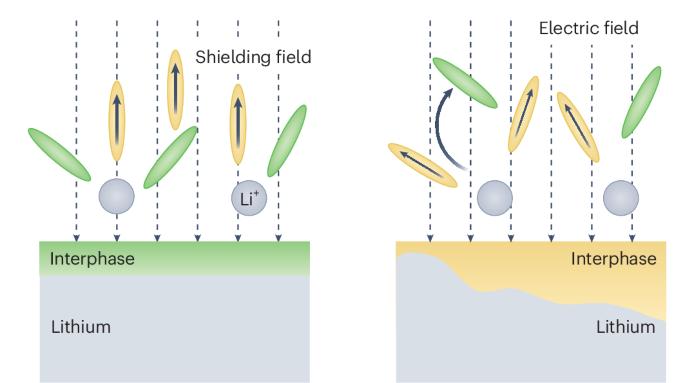绘制未知界面
IF 49.7
1区 材料科学
Q1 ENERGY & FUELS
引用次数: 0
摘要
长期以来,锂负极循环的改进一直依赖于电解质体特性与锂形成的间相之间的联系,而对转化过程却知之甚少。一项研究揭示了金属电镀开始时锂离子周围结构变化的影响因素,揭示了从离子到锂金属轨迹中一个不为人知的步骤。本文章由计算机程序翻译,如有差异,请以英文原文为准。


Mapping the uncharted interface
Improving lithium anode cycling has long relied on links between electrolyte bulk properties and the interphase formed on lithium, with little understanding of the transformation process. A study reveals factors governing structural changes around lithium ions at the onset of metal plating, illuminating an unseen step in the trajectory from ion to lithium metal.
求助全文
通过发布文献求助,成功后即可免费获取论文全文。
去求助
来源期刊

Nature Energy
Energy-Energy Engineering and Power Technology
CiteScore
75.10
自引率
1.10%
发文量
193
期刊介绍:
Nature Energy is a monthly, online-only journal committed to showcasing the most impactful research on energy, covering everything from its generation and distribution to the societal implications of energy technologies and policies.
With a focus on exploring all facets of the ongoing energy discourse, Nature Energy delves into topics such as energy generation, storage, distribution, management, and the societal impacts of energy technologies and policies. Emphasizing studies that push the boundaries of knowledge and contribute to the development of next-generation solutions, the journal serves as a platform for the exchange of ideas among stakeholders at the forefront of the energy sector.
Maintaining the hallmark standards of the Nature brand, Nature Energy boasts a dedicated team of professional editors, a rigorous peer-review process, meticulous copy-editing and production, rapid publication times, and editorial independence.
In addition to original research articles, Nature Energy also publishes a range of content types, including Comments, Perspectives, Reviews, News & Views, Features, and Correspondence, covering a diverse array of disciplines relevant to the field of energy.
 求助内容:
求助内容: 应助结果提醒方式:
应助结果提醒方式:


